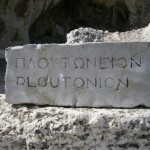 We left the Demeter Well and headed up the steps, thinking that we were headed for the Site Museum, but we were waylaid once again. Just before the entrance to the Temple of Demeter, where the final part of the Eleusinian Mysteries took place, we came upon a sign that said “Ploutonion”. It also said that this was the spot where Hades abducted Persephone as she was picking flowers.
We left the Demeter Well and headed up the steps, thinking that we were headed for the Site Museum, but we were waylaid once again. Just before the entrance to the Temple of Demeter, where the final part of the Eleusinian Mysteries took place, we came upon a sign that said “Ploutonion”. It also said that this was the spot where Hades abducted Persephone as she was picking flowers.
A Ploutonion is a sanctuary or shrine dedicated to Hades, god of the underworld. They are built at entrances to the underworld, and are, fortunately, rare. Strabo* identifies the only other ones I could find. Both were in Anatolia (modern Turkey), one outside Caria and one near Phrygia, and both had vents that released mephitic (noxious) vapors, and both were dream oracles.
There is another sort of sanctuary of Hades called a necromanteion. This is also an opening to the underworld, but it is an oracle of the dead. People go here to speak with the souls of the departed. Both deTraci Regula and Herodotus**
identify a site near the modern town of Parga on the northwest coast of Greece as a necromanteion. This is yet another place that claims to be the spot where Hades nabbed Persephone. Regula describes it as “grim and spooky”.
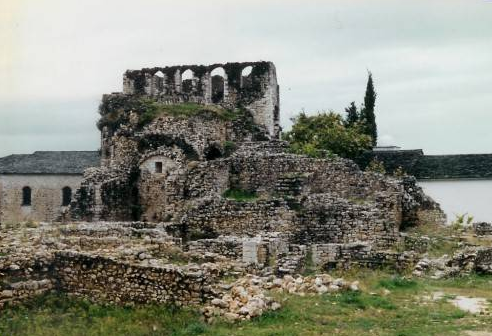
The Greek Orthodox Church, however, recognized a power point when they saw one and built a chapel over the ruins of the oracle. A Black Madonna presides over it—of course.
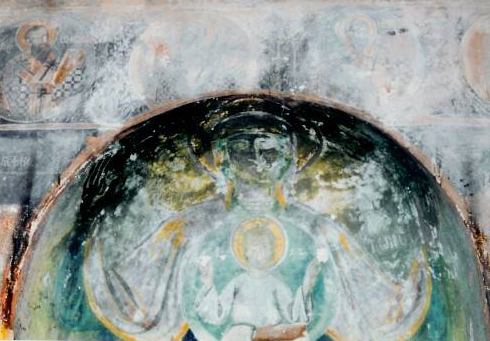
Strabo* mentions another possible necromanteion at Lake Avernus, a crater lake near Cumae***on the west coast of Italy. Avernus is Latin for “no birds”. They were killed by the noxious fumes rising from the lake shore. Strabo says he only knows of this site from “the stories the people before my time used to tell”.
The only folks who ever built an actual temple to Hades were the people of Elis, a city in the western Peloponnese. They did this because Hades fought with them when Heracles (Hercules) and Athena invaded their country. But his temple was only opened once a year**** because, like all Greeks, they feared the Dark Lord’s cold reach.
In fact, the Greeks feared Hades so much that they hesitated to even say his name. Instead he was called by euphemistic names, such as Plouton (Giver of wealth), He who must not be named, The invisible one, and He who receives many.
But of course, the site of the Eleusinian Mysteries would have to have a sanctuary of Hades (or Plouton). He is the cause of the whole myth on which the Mysteries were based.
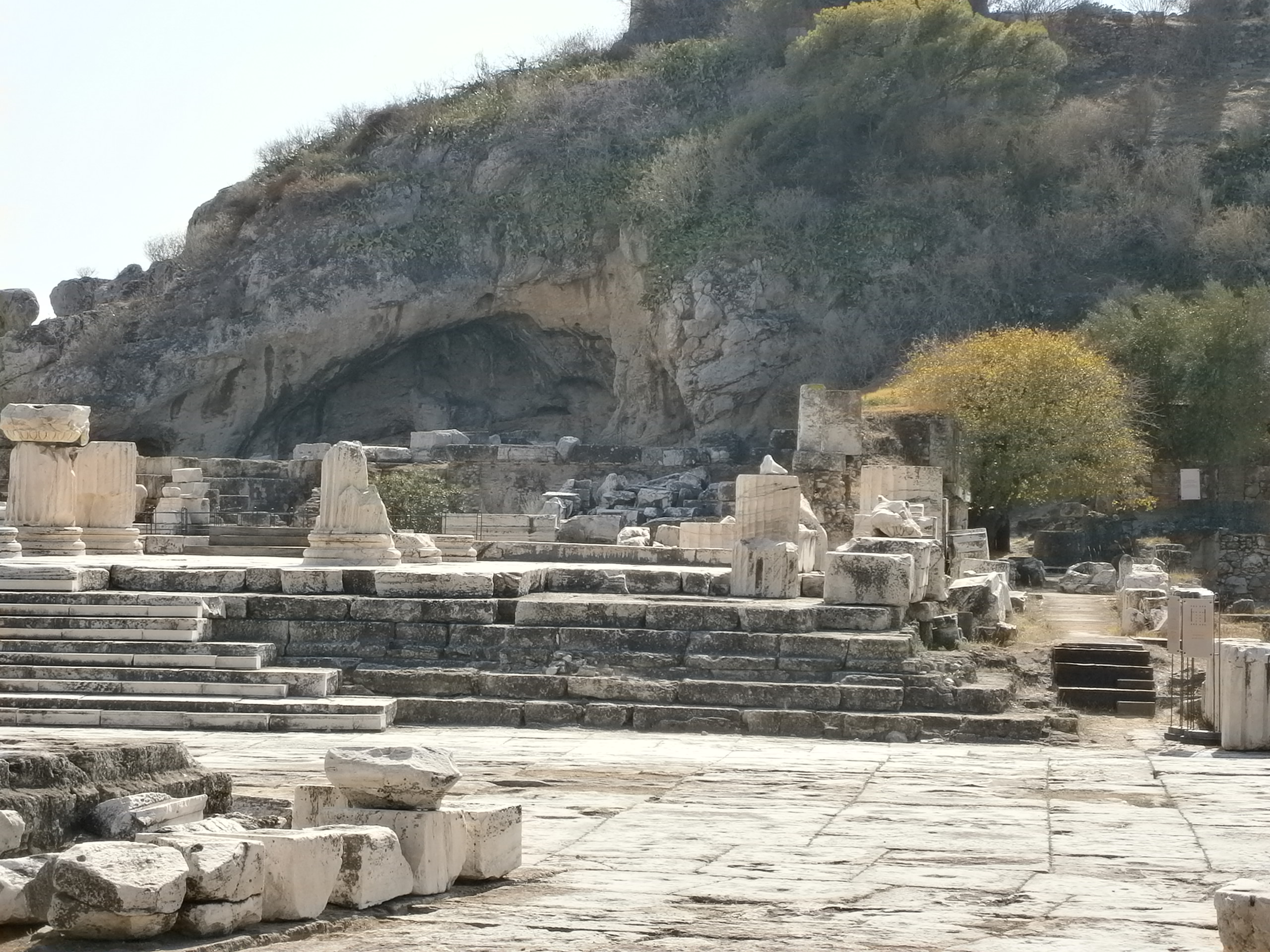
When we left Demeter at the well she still had no idea that Hades had taken her daughter. Finally Hecate appeared to her and suggested that she ask Helios, who sees all things under the sun. Helios told her that he had seen Hades in his black chariot pulled by four coal-black stallions burst out of the underworld and seize her daughter.
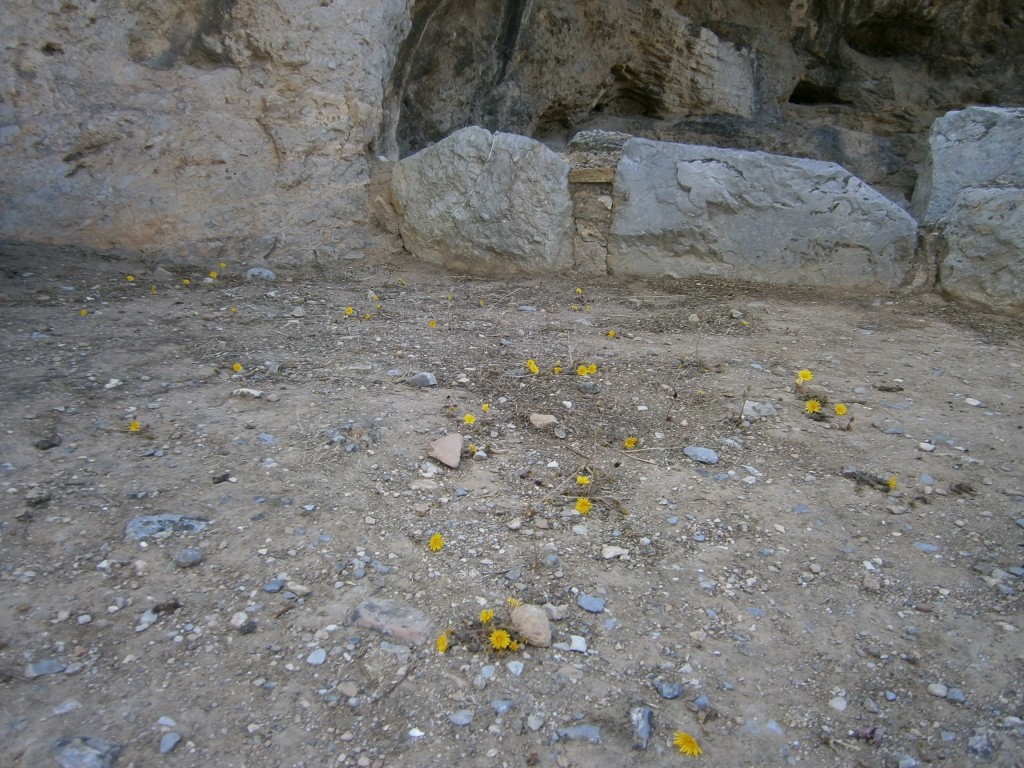
Demeter was furious and demanded that her bother, Zeus, king of the gods, make her other brother, Hades, return her daughter. Zeus refused and Demeter, in her grief and rage, caused the earth to go barren and all the crops and cattle to die. The people suffered and died in great numbers and no longer made burnt offerings to the gods. Finally Zeus relented and sent Hermes down to Hades with Demeter to bring back Persephone. But Hades had one more card up the sleeve of his tunic (the ace of spades, no doubt).
“I would be happy to comply,” replied the god who never willingly let anyone leave his realm, “but your daughter has eaten six (or three or a dozen) pomegranate seeds. Anyone who sups in the realm of the dead may never leave.”
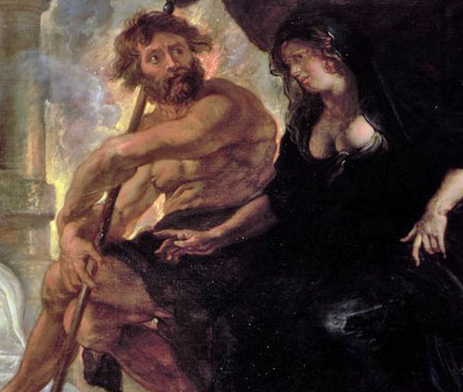
After much negotiation, they decided that Persephone would spend part of the year with her husband (fall, winter) and part of the year with her mother (spring, summer).
This myth describes the quintessential mystery of the death and rebirth of both the land and it’s people. Every pantheon has a story of a hero, often a woman, who goes down to underworld, dies, and is reborn. We will never know for sure, because initiates were sworn to secrecy upon pain of death and all we have are scattered impressions and brief summaries, but most historians agree that the mystery of Eleusina was that of death and rebirth. Many participants reported that once they had experienced The Mysteries they were no longer afraid to die.
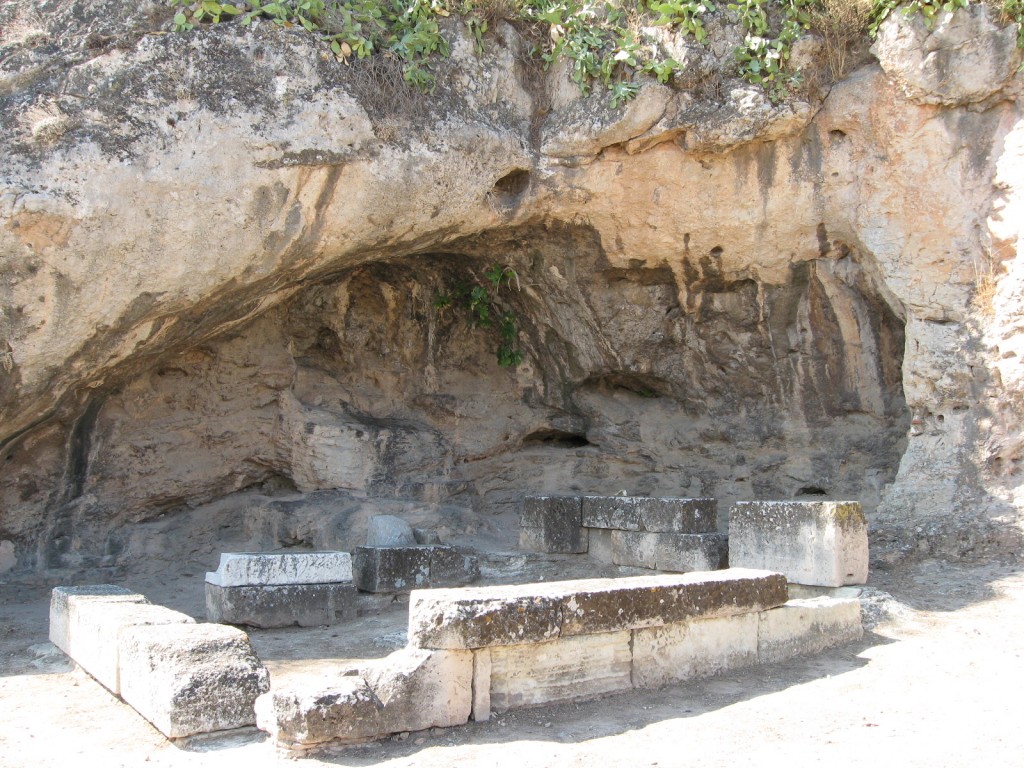
All that remains of the Ploutonion at Elefsina is a small rectangle of foundation blocks in front of a shallow cave. But it still vibrates with power. The energy is strongest in and around the cave. It sent goosebumps up my arms, even though the day was hotter than the hubs of Hades. And we weren’t the only ones who had felt it. There were small offerings scattered on a stone in the center of the shrine.
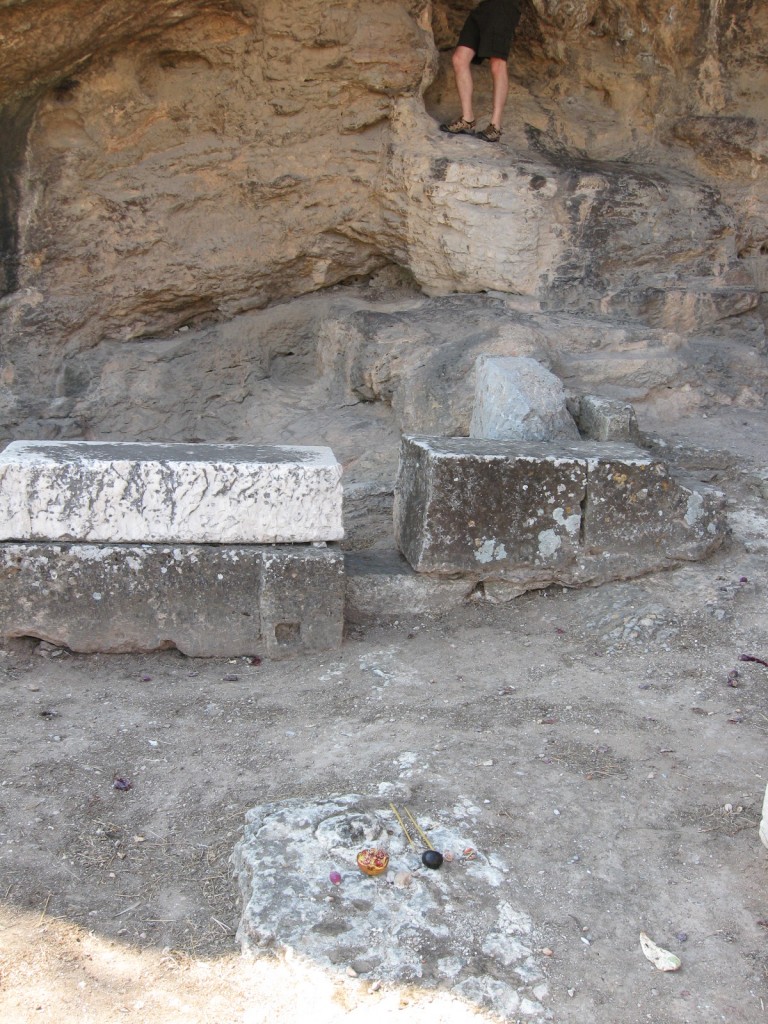
Craig handed me a fifty-cent euro. “Here,” he said, “make an offering.” A perfect gift for the god of all the wealth of the earth.
I slipped the coin into one of the many tiny crevices around the cave, and it was like putting a quarter in a juke box.
Hades began talking to me.
I stood paralyzed with shock, my finger still stuck in the cliff face, as his words surrounded me. They were the same familiar, encouraging words I’d often repeated frantically to myself as I stared, sleepless with fear and worry, into the uncaring night. But from the lips of the Dark Lord they sank deep into my soul, healing the weaknesses and banishing doubt. A heaviness lifted from my heart and confidence sparkled through me. I wept tears of joy.
Had I just been handed the Mystery of Elefsina on a votive plaque? If Hades, the fearsome King of the Dead, can bring comfort and rejuvenation then perhaps Death, the most dreaded part of life, brings these gifts as well.
The thing I do know is that Hades is alive and powerful and still rules the underworld.
And you can find him at his sanctuary in Elefsina.
To be continued…
*Greek philosopher, geographer, and historian, 64BCE-24CE. The reference appears in his Geography 5. 4. 5 ff
** Histories 5. 92, C5th cent, BCE
***the first Greek colony in Italy
****Pausanias, Description of Greece 6. 25. 2


9 thoughts on “Power Points of Eleusius: The Ploutonion”
what an incredible experience
I tried very hard to describe it, but it was indescribable.
Wow. This week I read through a pathworking involving a journey to the underworld with a Greek mythology framework. Talk about timing. And the communication! Scorpionic intensity for sure!
Chrissy, I read all your blogs. This one however…..reached me deeply. How not? Well done.
Thank you.
It reached me deeply too.
Great post. This is one of my favorite myths. I was telling Alex the story just the other day.
Indescribable? Maybe. But when I read this, I could still feel an echo of how it must have felt for you. Deep delight!
It was a tremendous gift.
Your blog gave me goose bumps.